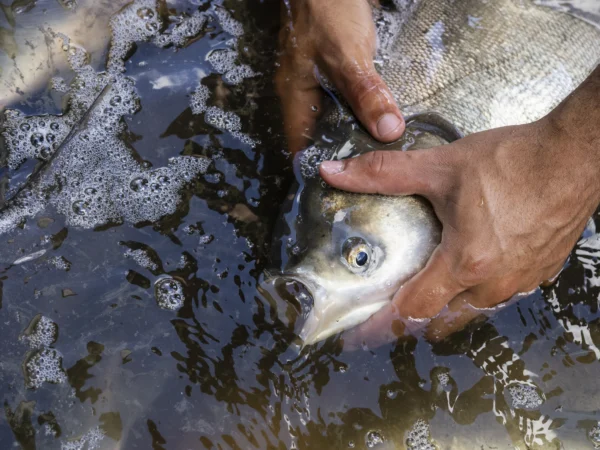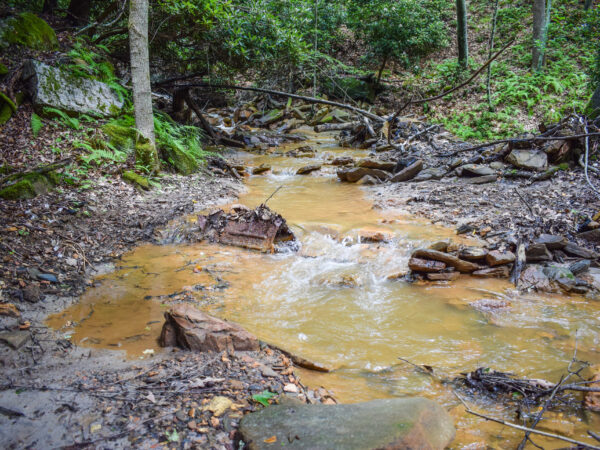
Michigan’s dam safety program has been under intense scrutiny since the epic failure in Midland in May displaced 10,000 people.
Multiple lawsuits have ensued between Michigan, dam owner Boyce Hydro and citizens impacted by the failure, with each claiming the failure was someone else’s fault.
But a spotlight was put on Michigan dam regulators after it was revealed that the state’s 1,100 dams are monitored by a staff of two plus a supervisor, all with a meager budget of just $348,000, most of which is dedicated to salaries.
The disaster and scrutiny that followed prompted Michigan Gov. Gretchen Whitmer to take a close look at the dam safety program.
Whitmer ordered the state’s Department of Environment, Great Lakes and Energy, the agency responsible for dams, to conduct an investigation into “all aspects” of Michigan’s dam program, spokesperson Nick Assendelft told Great Lakes Now. The investigation is expected to take months.
But how does Michigan compare to other Great Lakes states? Is a minimal staff and budget the norm in the region? What resources do other states allocate for dam safety?
State-by-state canvass
Great Lakes Now decided to take a look by canvassing the region. We contacted the appropriate dam safety agency for the seven other states plus Ontario.
One caveat: there are thousands of dams in the states, but state agencies are not responsible for all of them. The federal government has a role best illustrated by the failed Edenville Dam, which was under federal control until 2018 when it became Michigan’s responsibility.
This canvass focused on state-regulated dams, which tend to be higher-risk dams. For ease of comparison, focus was on the number of dams regulated, staffing, annual budget for the dam program and enforcement philosophy.
None of the states that responded said they had experienced a dam failure in recent decades the magnitude of the recent one in Michigan.
Michigan
In addition to the staff of two and a $348,000 annual budget for 1,100 dams, Michigan, like other states, rates dams for risk. All states use a variation of the same formula assigning a risk and taking action based on the risk and the condition of the dam. There can also be a stated or unstated enforcement philosophy that says an agency will work with a dam owner to bring it back into compliance. Michigan has that policy.
Bigger budgets, more staff
Illinois
The Illinois DNR has approximately 800 dams under the state’s administrative rule plus another 1,000 for which the agency tracks information on changes in its status, said Paul Mauer, the state dam engineer.
The department has three full time engineers plus another 16 who are available as needed, he said. The annual budget is estimated at $430,000.
“Dam safety rules call for strict enforcement when there is immediate danger of failure which constitutes a serious threat to human life,” Mauer said.
Under other conditions, Mauer said the goal is still to resolve deficiencies in a timely manner but working with an owner is contingent on a cooperative owner.
Indiana
A staff of six is responsible for Indiana’s 1,100 state-regulated dams with an estimated budget of $530,000, according to the Indiana DNR director of communications, James Brindle.
The department’s emphasis is on enforcement, but they may be willing to work with an owner over time to bring a dam into compliance, Brindle said.
New York
New York reported 5,934 dams in its inventory as of May 2020, according to a New York State Department of Environmental Conservation spokesperson, though it is unclear if the state regulates that full inventory. Great Lakes Now was unable to confirm that number at deadline.
The dam safety department has six dedicated staff. A full-time engineer and other support staff in regional offices bring the total staff to the equivalent of 10.5. The estimated budget in 2019 was $1.9 million
The DEC spokesperson did not comment on enforcement policy.
Ohio
Ohio regulates 1,478 dams, including 366 classified as high hazard, according to the state’s dam safety website. The budget is over $1.8 million and staffing for dams is the equivalent of 12 full-time employees. A breakdown was not provided.
Pennsylvania
Dam safety responsibility is divided in Pennsylvania where the Department of Conservation and Natural Resources oversees approximately 130 state-owned dams, of which 46 are considered high hazard, according to DCNR press secretary Terry Brady.
Brady did not respond to staffing and budget questions, and the other regulating agency, Department of Environmental Protection, did not respond to a request for information.
Wisconsin
Of the estimated 4,000 dams in Wisconsin, approximately 825 are regulated by the state and they are the large dams, according to Robert Davis, safety chief for dams in the Wisconsin Department of Natural Resources.
Staffing is a mix of engineers who work on dams and some for whom dam safety is 50 percent of their work. Additional support comes from an engineer who does dam failure analyses and data base improvements. “When fully staffed, we are at approximately 7.5 staff,” Davis said.
The department budget is $759,500 annually.
Wisconsin’s emphasis is on enforcement but the department is “willing to work with a dam owner over time to bring the dam back into compliance,” Davis said, but it’s done on a case-by-case basis depending on the condition of the dam, its hazard rating and other factors.
Minnesota and Ontario’s regulatory agencies did not respond to Great Lakes Now’s inquiries.
Read more coverage of the Midland dam breaches on Great Lakes Now:
NASA images show impact of Midland County flooding
Legal Responsibility: Michigan lawsuit blames dam owner for Midland dam failure
Rescuing History: Museum experts across Michigan race to save the Midland archive
More Than Dow: Chemicals, contaminants and untreated sewage all washed out by Midland dam breaks
Midland Flooding: Climate change and rains exacerbate dam infrastructure issues
Featured image: Devil’s Kitchen Dam in Carbondale, Ill. (Photo courtesy of the Illinois DNR)




